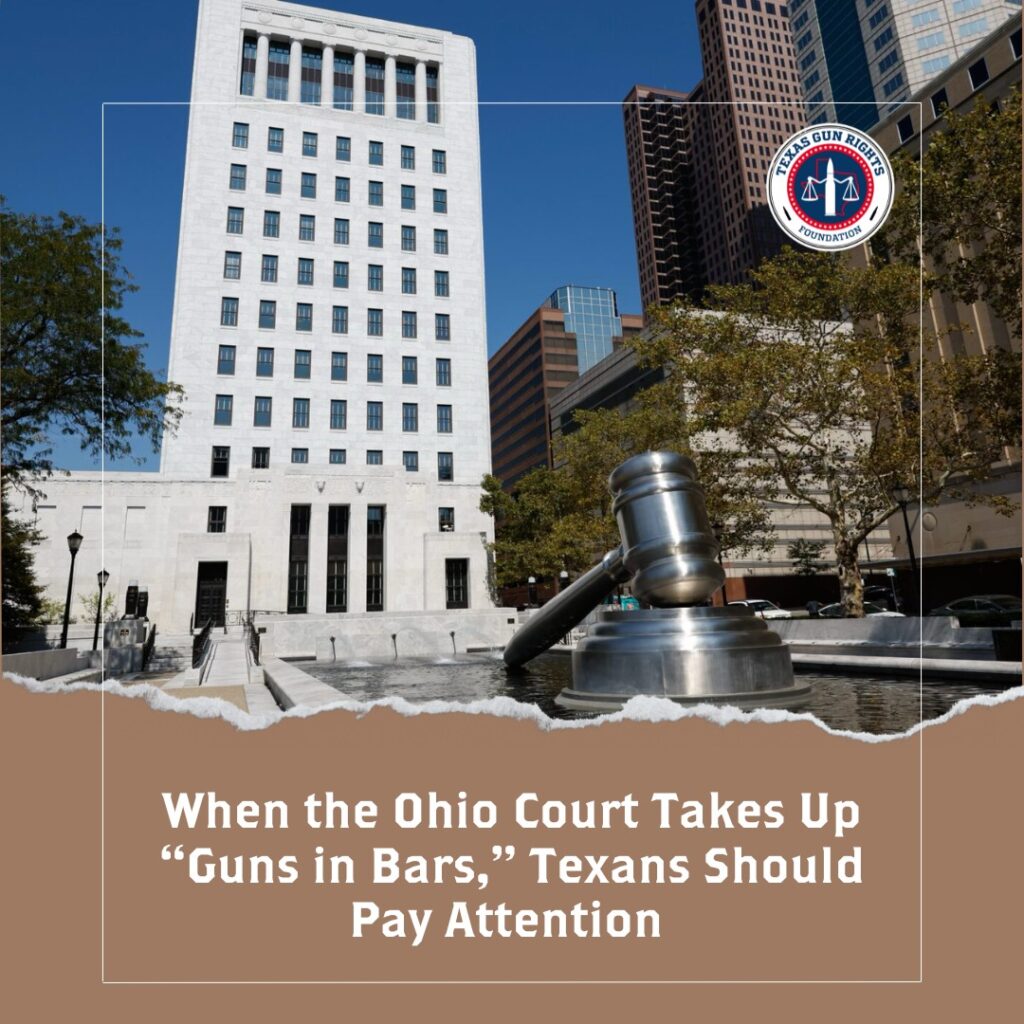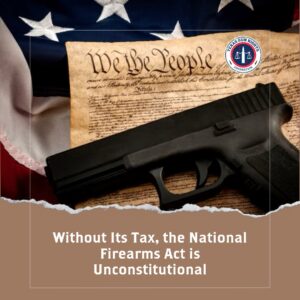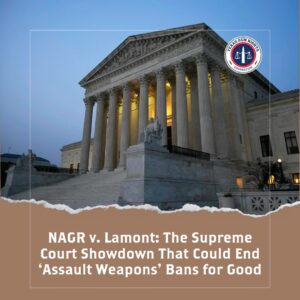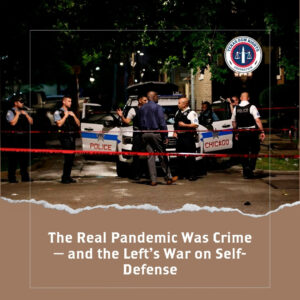A critical case now before the Ohio Supreme Court could reshape how courts nationwide view the intersection of gun rights and alcohol-serving establishments.
Under Ohio Revised Code 2923.121(A), it is generally a crime to possess a firearm on a Class D liquor-permit premise — unless the individual has a valid Ohio Concealed Handgun License (CHL) and is not personally drinking or under the influence.
The legal question in State v. Elijah Striblin is whether the state can treat any otherwise law-abiding adult as a criminal simply for entering a venue where alcohol is served, when the U.S. Supreme Court’s Bruen decision requires modern laws to fit our nation’s “history and tradition” of firearm regulation .
Ohio’s Two-Tier System: License Holders vs. Constitutional Carriers
Ohio’s 2022 permitless-carry reform was a step forward, but much like Texas, the state still gives licensed carriers privileges that permitless carriers do not have.
A CHL holder may legally carry into certain Class D establishments so long as they refrain from drinking; yet a constitutional carrier—someone equally law-abiding but unlicensed—faces felony prosecution for the same conduct.
This creates a government-drawn dividing line between citizens who paid a fee for permission and those exercising a right freely.
That distinction is incompatible with the Second Amendment’s text and purpose. Nowhere does the Constitution say that the right to keep and bear arms belongs only to those who hold laminated cards.
If you are legally eligible to own a firearm, you should be able to carry it anywhere a licensed individual can.
As Bruen reaffirmed, the right to bear arms is not a privilege to be licensed—it is a birthright to be respected.
Comparing Ohio to Texas — and Texas Falls Short
On paper, Ohio’s Class D restrictions seem strict, yet Texas law contains an even more strict, revenue-based barrier to self-defense.
Under Texas Penal Code §46.03(a)(7), it is a third-degree felony to carry a handgun onto the premises of a business deriving 51 percent or more of its income from on-premises alcohol sales; such venues must display the red “51 %” sign at entrances .
This rule—known across Texas as the “51 % law”—bars armed self-defense in thousands of restaurants, bars, and music venues, regardless of the carrier’s sobriety.
By contrast, many states take a more reasonable approach.
Some rely on standard trespass laws that allow property owners to set their own rules; others prohibit carry only while a person is intoxicated.
Colorado, for instance, criminalizes possessing a firearm while intoxicated under C.R.S. 18-12-106(1)(d)—an impairment-based rather than venue-based restriction .
Officers there often apply ordinary DUI impairment thresholds (0.05–0.08 BAC) as practical benchmarks. That’s the common-sense model Texas should follow.
In reality, Texas’ 51 % statute is little more than a restaurant-carry ban by another name. It disarms designated drivers and responsible adults simply because of an arbitrary revenue percentage.
Why the Ohio Case Matters to Texans
If the Ohio Supreme Court strikes down or narrows its Class D prohibition, it could lay the groundwork for legal action in other states with similar alcohol-venue gun bans.
Such a decision would certainly provide momentum to challenge Texas’ outdated 51 % law.
Texas Gun Rights (TXGR) has already called the statute what it is—a “restaurant-carry ban”—and is preparing to dismantle it.
TXGR President Chris McNutt puts it plainly: “You shouldn’t have to sacrifice your safety for choosing to be a designated driver.”
For TXGR, the fight is about consistency.
Whether it’s a liquor-permit loophole in Ohio or a revenue-threshold ban in Texas, both treat honest citizens as second-class defenders.
The right to bear arms belongs to the people—not to a privileged subset who paid for government paperwork.
Whether you’re in Columbus or Austin, the principle remains the same: you shouldn’t have to check your firearm at the door simply because a business sells alcohol.
Texas Gun Rights will continue leading the charge to end the 51 % ban and restore equal rights to every law-abiding Texan.
Because freedom doesn’t stop at the bar entrance—and it shouldn’t depend on a government license.







